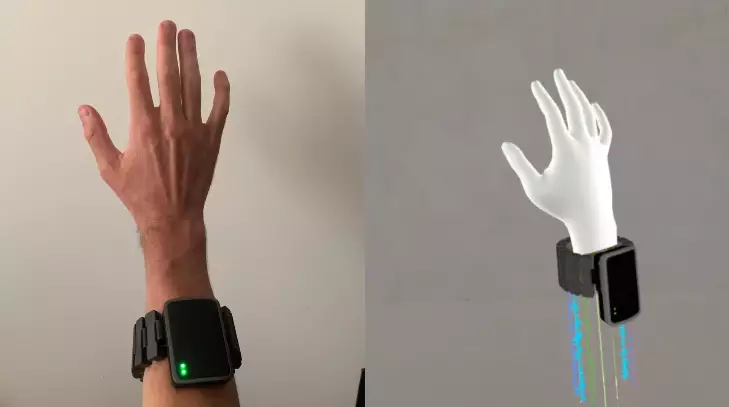Gone are the days when the idea of having a chip implanted in your head was the only way to experience neural-machine interfacing. Meta, formerly known as Facebook, has introduced a wristband that tracks hand and finger movements through non-invasive techniques. This innovative device utilizes electromyography to detect neural electrical signals passing through the nerves in your arm. Although it may sound less intimidating than Neuralink’s invasive procedure, Meta’s wristband is still raising eyebrows and sparking curiosity among tech enthusiasts.
Meta CEO Mark Zuckerberg has shared his excitement about the development of this wristband, emphasizing that it is not just a simple tool for moving a mouse pointer or a game controller. He envisions a future where individuals can communicate with artificial intelligence and other people in real-time through a completely private and discrete interface. The idea of being able to type or control devices simply by thinking about moving your hand opens up a world of possibilities. However, the concept of utilizing our nervous system’s spare bandwidth for such interactions raises concerns about privacy and potential misuse.
While the benefits of Meta’s wristband are evident, including enhanced communication abilities and seamless interaction with technology, there are also unsettling aspects to consider. The notion of individuals exchanging messages or comments through neural signals without any visible cues poses a challenge to traditional communication norms. Will people start sending silent messages during face-to-face conversations, blurring the lines between reality and virtual interactions? The balance between convenience and privacy must be carefully evaluated as this technology continues to evolve.
Meta’s wristband is just one example of the rapid advancements in technology that are transforming the way we interact with the digital world. As artificial intelligence technologies continue to expand, the boundaries between humans and machines are becoming increasingly blurred. While the possibilities are endless, the ethical implications of such innovations cannot be ignored. The integration of neural-machine interfaces into everyday life raises important questions about autonomy, consent, and surveillance.
Meta’s wristband represents a significant leap forward in the field of neural-machine interfacing. The potential for enhancing communication and control through neural signals is both exciting and unsettling. As this technology unfolds, it is crucial to engage in critical discussions about its implications for privacy, ethics, and human interaction. While the future of neural-machine interfaces may be uncertain, one thing is clear – the intersection of technology and humanity is a complex and evolving landscape that will continue to shape our collective future.


Leave a Reply